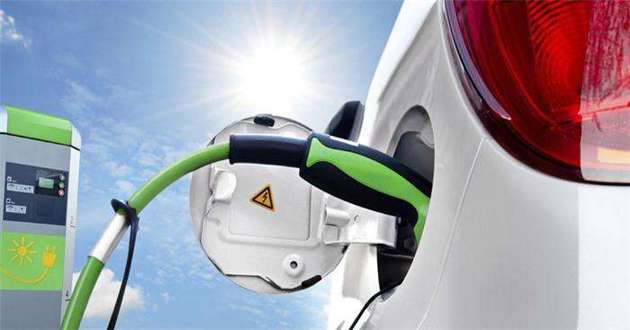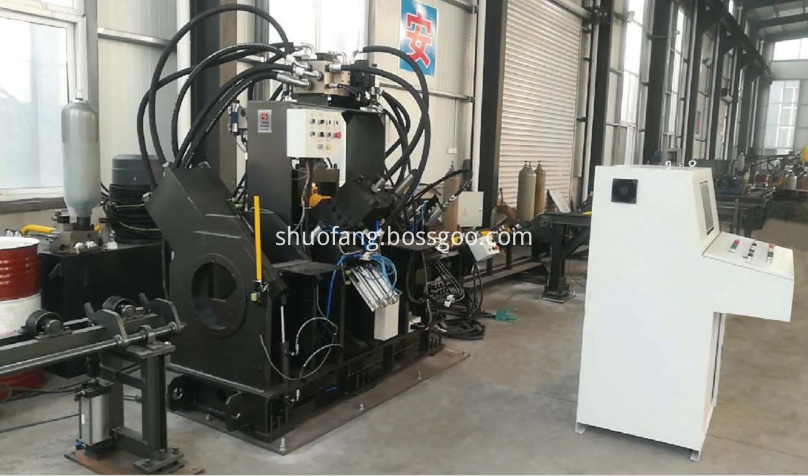Use double points for passenger car enterprises to calculate accounts: positive and negative points have a wide gap between companies
The "Measures for the concurrent management of the average fuel consumption of passenger vehicle companies and new energy vehicle points (draft)" (hereinafter referred to as the "dual score" policy) which has sparked heated discussions is getting closer and closer.

From the public solicitation of opinions by the Ministry of Industry and Information Technology in June to the end of July, Zheng Lixin, the spokesperson of the Ministry of Industry and Information, and the Director of the Operation Monitoring and Coordination Bureau, publicly stated that the “dual credit†policy will fulfill the issuance procedure and be officially released in the near future.
The public car companies have different attitudes towards the "dual credit" policy. Some feel that it is stress, others feel that it is an opportunity, and some feel that the response to the policy is calm, while others feel unprepared. It has to be admitted that participating in competition under the new "rules of the game", "double-integration", is a brand-new test for companies' "emotional intelligence" and "intelligence quotient." How to deal with rules, and how to win on the basis of continuously tapping the potential of technology is the key. So, according to the current situation, whoever is smiling in front of the “double-integration†policy, who is not able to make another move?
Fuel consumption points are positive and negative
This time, the reporter selected 15 domestic passenger car companies to calculate the fuel consumption points. The reference data is based on the average fuel consumption of passenger vehicles in 2016 published by the Ministry of Industry and Information Technology. The calculation method shall be based on the calculation formula of the average fuel consumption of passenger vehicles as specified in the “dual-integration†policy. That is, the average fuel consumption of passenger vehicle companies shall be the average fuel consumption of the enterprise and the actual value of the fuel consumption of the enterprise. The difference between the value and the production or import volume of the passenger vehicle of the company (the calculation result is rounded off by the rounding principle).
Although, "using the data of 2016 as the matter of 2018" is not in line with the principle of timeliness, based on the current average fuel consumption of passenger vehicles in 2016, it is the latest data released by the Ministry of Industry and Information Technology and it is quite convincing. In addition, since the calculation results of the company's average fuel consumption released by the Ministry of Industry and Information Technology in 2016 have already included the production of new energy models of car companies, this calculation has not been separately listed, so there may be some discrepancies in the calculation results. But the big direction is correct.
So, what are the results of the fuel consumption points of these 15 domestic passenger car companies? Among the 15 domestic passenger vehicle manufacturers included in this calculation, the results calculated according to the “dual-integration†policy for the average fuel consumption formula for passenger vehicle companies can be described as “positive, negative, or disparateâ€. . Among them, BYD calculated the average fuel consumption of passenger car companies according to the information released by the Ministry of Industry and Information Technology in 2016 and obtained more than 900,000 positive credits. BYD can obtain 900,000 positive points due to the relatively high production and sales volume of new energy vehicles. (The calculation of the average fuel consumption limit of passenger car companies in 2016 includes the new energy vehicle part. This calculation has not yet included this part separately. Out), FAW-Volkswagen and Geely received more than 800,000 and more than 700,000 positive points respectively. SAIC-Volkswagen and SAIC-GM-Wuling's positive points were at a level of more than 300,000 points. SAIC-GM's positive points were close to 200,000 points. Beijing Hyundai achieved a close. 100,000 positive points. It can be seen that in 2016, the “positive score campâ€, domestic passenger car companies have gradually opened up their grades in fuel consumption points.
Eight of the 15 domestic passenger car companies in the statistics generated “negative points†for fuel consumption. The main reason is that the actual value of the average fuel consumption of these 8 companies in 2016 is higher than the target value. Among them, the negative score of Great Wall Motors is the largest among the car companies in this calculation, which is close to 300,000 points. On the whole, in the “negative score campâ€, the second- and third-line joint venture brands and the auto companies with SUV as their main products are more likely to “listâ€. The phased implementation of standards for the average fuel consumption of passenger car companies has been steadily increasing, placing ever-increasing demands on the fuel economy of conventional energy vehicles. This may also lead to further widening of the gap between companies in terms of obtaining fuel consumption points. .
â– It is not light to fill in the integral task
According to the average fuel consumption performance of domestic passenger car companies in 2016, for those companies that have calculated “dual-integration†policies that generate “negative creditsâ€, the task of making up points is not minor.
After a simple calculation, how many new energy vehicles will need to be recharged in order to successfully pass these "negative points". The calculation method adopts the relevant calculation method for new energy vehicles in the “dual-integration†policy, that is, a pure electric vehicle with a driving range of 250-350 km can obtain a 4-point unified calculation for each vehicle. The results show that Great Wall Motor needs 73,000 new energy vehicle production capacity, Changan Automobile needs nearly 60,000 vehicles, Guangfeike needs 20,000 vehicles, Chang Anfu needs nearly 19,000 vehicles, and Southeast Automotive needs about 136,000 vehicles.
Therefore, under the “dual-integration†policy, Great Wall Motor’s goal of increasing capital investment is clear at a glance. So how will other car companies respond? In addition to our algorithm, companies that currently generate “negative credits†will need to start to make up points, and companies that have obtained “positive scores†according to this algorithm are not at ease, because they are required to use 2018 to 2020 in accordance with regulations. The proportion requirement of new energy vehicles for car companies is applicable to all passenger car companies. Although the main reliance on traditional energy vehicles has obtained “positive pointsâ€, it is still not easy to achieve the proportion of new energy car points. For most of the mainstream passenger car companies whose production capacity is continuously expanding, it is also necessary to make efforts to meet the requirements of the “double-integration†policy.
The successive launches of joint ventures and cooperation projects such as Jianghuai VW and Great Wall Yujie, as well as more and more traditional energy companies adjusting their internal product layouts, and increasing the production and delivery of new energy automotive products, means responding to the upcoming “ Double-integration policy, companies are in action. It is undeniable that compared with the subsidy policy for new energy vehicles, the "dual-integration" policy has a stronger "compulsory" taste.
â– 10,000 to 30,000 yuan per transaction, penalties suggested surfaced
The traditional passenger car companies are trying their best to make up for the “negative pointsâ€. According to the policy, once the vehicles are filled up through transactions, etc., the car companies whose fuel consumption is still “negative points†will face penalties.
Recently, regarding the issue of points trading and penalties, Li Jinyong, president of the National New Energy Vehicles Branch of the China National Federation of Industry and Commerce, suggested that in order for the "negative points" policy to proceed smoothly, the specific transactions, penalties and amounts will be clearly defined, which will facilitate the implementation of the policy. Sex and operability. "Measure the domestic market situation, combined with relevant experience in foreign markets, the implementation of integral punishment in 2018, in the transaction segment is set to between 10,000 to 30,000 yuan more appropriate." Li Jinyong said. He said that in the points trading between companies, the transaction price per minute can be relatively low, for example, the price of purchasing points for traditional fuel vehicles can be set at 10,000 yuan. If you enter the penalties, the maximum penalty can be set at 30,000 yuan per minute.
It has Single axis and Multi axis processing functions,
Computer programming auto processing
Process tolerance. and process accuracy of machine are up to the industry standard.

Beam Latching Machine,Steel Fabrication Machine,Beam Process Machine,Beam Drill Machine
Shandong ShuoFang Environmental Technology Co., Ltd. , https://www.chinafincnc.com
